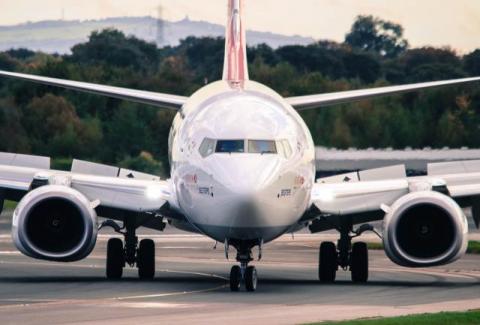What's the Deal with the Boeing 737?
March 20, 2019By: Dr. Ian R. McAndrew, FRAeS
In the aftermath of the Ethiopian air-crash it is time to reflect and ponder on air safety. This air-crash is possibly the second identical one for the B737 Max, yet until the full investigation is completed we can only guess at the underlying cause.
The history of B737 goes back to the 1960s. It entered service in 1968 and has over 50 years of service with more than 10,000 aircraft produced. Today’s B737 resemble the first ones in a few ways; however, they are also very different in many ways. Most noticeably will be the engines, which are turbo fans not turbo jets, and are easily identified by the wider diameter. It is these modern and efficient engines that have changed the B737’s center of gravity - the position where if suspended by a chain to a hangar roof it would balance horizontally.
An aircraft has a center of pressure resulting from the aerodynamic forces, which is different to the center of gravity. The rear wings (horizontal stabilisers) are moved to ensure the aircraft flies straight and level and compensates for these two forces that try to push the nose up or down. On the B737 model a new control system has been designed to adjust the horizontal stabiliser and make sure the aircraft flies without the possibility of stall (when aerodynamic lift is not produced as the nose of the aircraft is pointed too steep or the speed too slow). These risks of nose position and speed happen when taking off, but the system was designed to assist the pilot when problems occur.
Reports have argued it only works in auto pilot. Others reported the pilot could not override the system. The facts are if an aircraft is going to stall, increasing speed is critical and pushing the nose down will give you that speed. In the case of the Ethiopian air-crash it seems the system did this, at a low altitude you risk hitting the earth before you have time to adjust or correct. When flying at altitudes that are typically over 30,000ft it is not such a problem.
So what happened? We will have to wait for the full report. I suspect initial investigations have highlighted concerns as there is a mandatory software update planned. If we are seeing a repeat issue, then grounding them was the correct decision.
Some have argued the lack of training or experience of pilots outside the U.S. However, both of the pilots of this last crash had over 8,000 hours flying, and it is unlikely that was the case. Ethiopian Airlines has modern and highly trained pilots and maintainers.
We need to also remember when you keep adding to a design there are limitations. A V8 in a Ford model T would not be the same as a modern car with a V-8 engine. Perhaps we have seen the start of the end of this wonderful Aircraft with a 50-year history. Let’s hope not too soon and that it will still be flying in a few years.



